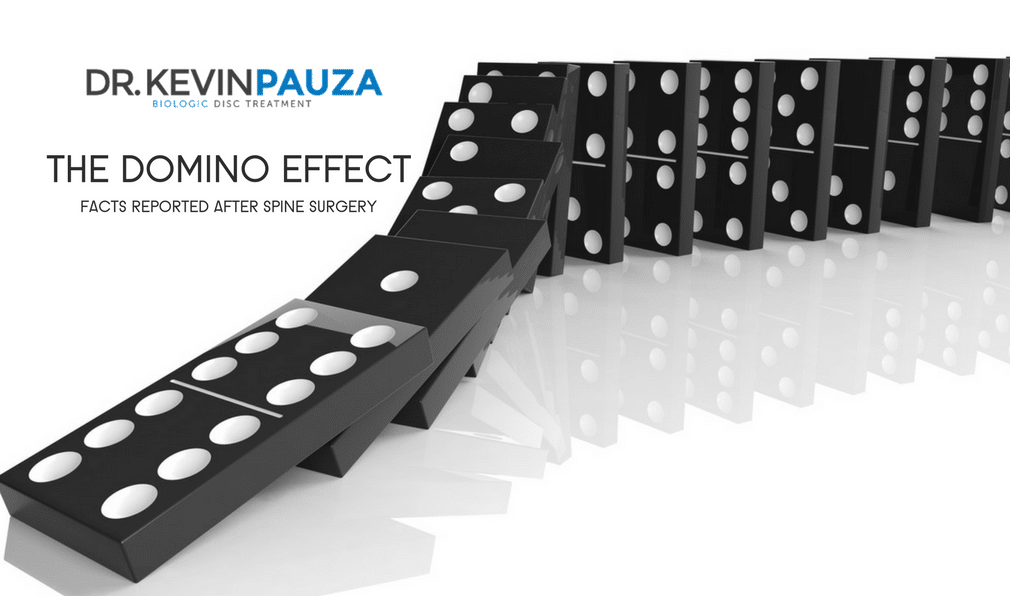The Domino Effect – Facts Reported After Spinal Fusion
Whether you believe in a creator or evolution, your spine’s design is perfect for moving and bending. Unfortunately, spinal fusions unnaturally connect spaces meant to move freely using metal rods, screws, or cages. Because fusions permanently immobilize spines, they eventually damage discs above and below fusions by overloading them with mechanical forces1. Thus, fusions accelerate degeneration of adjacent discs, causing the damaging domino effect 2.
Research demonstrates the domino effect is caused by cervical and lumbar spinal fusions and may cause patients to need additional spine surgery3,4,5, and unfortunately, repeat surgery increases the domino effect even more6, and leads to even more spine surgeries. Results of second surgeries are usually worse than first operations7, according to scientific research.
The tide of scientific evidence goes against spine fusions for treating degenerative disc disease pain, and now poor fusion outcomes are our nationwide concern. As reported in several news articles, Blue Cross-Blue Shield of North Carolina announced they will no longer pay for spine fusions in those patients with degenerative disc disease, because of the “sobering look” at poor patient outcomes, even after asking lobbyists of the Spine Industry and Spine Societies to provide positive evidence. Nothing positive exists.
Ethical Spine Surgeons spend much time personally talking with their patients about the domino effect because surgical fusions are irreversible…they are forever…just like the domino effect.
SCIENTIFIC REFERENCES
1. Mayo Clinic. Spine Fusions. http://www.mayoclinic.org/tests-procedures/spinal-fusion/home/ovc-20155554.
2. Virk SS, Niedermeier S, Yu E, Khan SN. Adjacent segment disease. Orthopedics. 2014;37(8):547-555. doi:10.3928/01477447-20140728-08.
3. Saavedra-Pozo FM, Deusdara R a M, Benzel EC. Adjacent Segment Disease Perspective and Review of the Literature. Ochsner J. 2014;14:78-83. http://www.pubmedcentral.nih.gov/articlerender.fcgi?artid=3963057&tool=pmcentrez&rendertype=abstract.
4. Ekman P, Möller H, Shalabi A, Yu YX, Hedlund R. A prospective randomised study on the long-term effect of lumbar fusion on adjacent disc degeneration. Eur Spine J. 2009;18(8):1175-1186. doi:10.1007/s00586-009-0947-3.
5. Cho SK, Riew KD. Adjacent segment disease following cervical spine surgery. J Am Acad Orthop Surg. 2013;21(1):3-11. doi:10.5435/JAAOS-21-01-3.
6. Celestre PC, Montgomery SR, Kupperman AI, Aghdasi B, Inoue H, Wang JC. Lumbar clinical adjacent segment pathology: predilection for proximal levels. Spine (Phila Pa 1976). 2014;39(2):172-176. doi:10.1097/BRS.0000000000000094.
7. Deyo RA, Mirza SK. The case for restraint in spinal surgery: Does quality management have a role to play? Eur Spine J. 2009;18(SUPPL. 3). doi:10.1007/s00586-009-0908-x.

